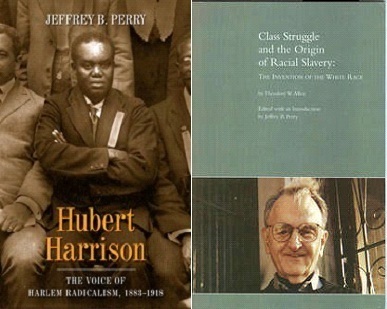Karl Marx and Frederick Engels in "The German Ideology" (1846), part 1, write --
"The ideas of the ruling class, are in every epoch the ruling ideas, i.e., the class which is the ruling material force of society, is at the same time its ruling intellectual force."
Looking back to the era of capitalist racial slavery throughout the South we see Senator Daniel Webster of Massachusetts explaining in the course of his March 7, 1850, oration on the proposed Compromise of that year --
". . . the general lead in the politics of the country, for three-fourths of the period that has elapsed since the adoption of the Constitution, has been a southern lead."
Alexander Stephens, the future Vice-President of the Confederacy, boasted in January 1861 --
"We [the southern slaveholder states] have always had control of it [the Federal government] . . . we have had a majority of the Presidents chosen from the South, as well as the control and management of most of those chosen from the north. We have had sixty years of southern presidents, to their 24, thus controlling the executive department. So of the judges of the Supreme Court, we have had 18 from the south, and but 11 from the north; although nearly four-fifths of the judicial business has arisen from the free states, yet a majority of this court have always been from the south. This we have required, so as to guard against any interpretation of the Constitution unfavorable to us. In like manner, we have been equally watchful to guard our interests in the legislative branch of government. In choosing the presiding presidents (pro tempore of the Senate) we have had 24 to their 11. Speaker of the House, we have had 23 and they 12. While the majority of the Representatives, from their greater population, have always been from the North, yet we have so generally secured the Speaker because he, to a great extent, shapes and controls the legislation of the country . . . Nor have we had less control of every other department of the general government."
See “The Developing Conjuncture and Some Insights From Hubert Harrison and Theodore W. Allen on the Centrality of the Fight Against White Supremacy” by Jeffrey B. Perry at http://www.jeffreybperry.net/works.htm (top left) Read More
"The ideas of the ruling class, are in every epoch the ruling ideas, i.e., the class which is the ruling material force of society, is at the same time its ruling intellectual force."
Looking back to the era of capitalist racial slavery throughout the South we see Senator Daniel Webster of Massachusetts explaining in the course of his March 7, 1850, oration on the proposed Compromise of that year --
". . . the general lead in the politics of the country, for three-fourths of the period that has elapsed since the adoption of the Constitution, has been a southern lead."
Alexander Stephens, the future Vice-President of the Confederacy, boasted in January 1861 --
"We [the southern slaveholder states] have always had control of it [the Federal government] . . . we have had a majority of the Presidents chosen from the South, as well as the control and management of most of those chosen from the north. We have had sixty years of southern presidents, to their 24, thus controlling the executive department. So of the judges of the Supreme Court, we have had 18 from the south, and but 11 from the north; although nearly four-fifths of the judicial business has arisen from the free states, yet a majority of this court have always been from the south. This we have required, so as to guard against any interpretation of the Constitution unfavorable to us. In like manner, we have been equally watchful to guard our interests in the legislative branch of government. In choosing the presiding presidents (pro tempore of the Senate) we have had 24 to their 11. Speaker of the House, we have had 23 and they 12. While the majority of the Representatives, from their greater population, have always been from the North, yet we have so generally secured the Speaker because he, to a great extent, shapes and controls the legislation of the country . . . Nor have we had less control of every other department of the general government."
See “The Developing Conjuncture and Some Insights From Hubert Harrison and Theodore W. Allen on the Centrality of the Fight Against White Supremacy” by Jeffrey B. Perry at http://www.jeffreybperry.net/works.htm (top left) Read More
